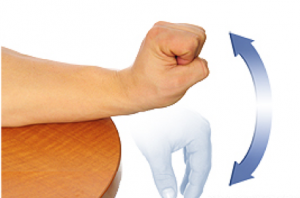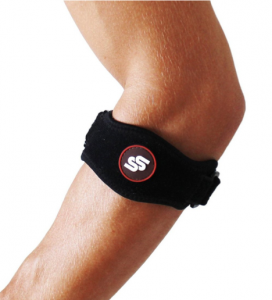How can I have tennis elbow if I don’t play tennis? Is this an injury of the bone or muscle? Why do I feel pain in my forearm as well as my elbow?
These are just a few frequently asked questions from those experiencing Tennis Elbow. In this blog, I will endeavour to answer these, as well as a few more really common questions I’ve seen in practice from those experiencing Tennis Elbow related pain.
So, what is Tennis Elbow?
Tennis Elbow is an overuse injury of the muscles of the elbow and forearm. It can be of one muscle, or multiple. Most commonly, it is of the muscle ‘extensor carpi radialis brevis’, but can also be of ‘extensor carpi radialis longus’ or ‘extensor carpi ulnaris’.
Overuse can come from a range of activities – not just tennis! But they are usually caused by frequent work with the hands and wrist. This can include computer use, heavy lifting, trades that involve gripping, and any other racquet or throwing sports.
As you can see, the culprit can be wide ranging.
I’ve heard lots of different names for Tennis Elbow, which one is correct?
Tennis Elbow goes by several different names, including extensor tendinopathy and lateral epicondylitis.
Overuse or extensive time under load of the muscles in the forearm can cause painful microtears and micro degeneration of the muscle’s tendon – the part of the muscle which attaches it to bone.
Damage to the tendon is referred to as an Extensor Tendinopathy, as it only involves the muscle and tendon.
However, if this continues to go untreated, these tendons can harden and also begin to pull on the bony attachment. At this point, it has progressed from being purely muscular to becoming a bony injury called lateral epicondylitis.
What’s the difference – and does it matter?
In short, the difference doesn’t really matter!
With physiotherapy, the treatments are very similar. The only thing that may differ is the time it takes to heal. An extensor tendinopathy will likely be quicker than lateral epicondylitis.
However, it all depends on your workload, how much you can avoid the aggravating activity, and how consistent you are with a prescribed exercise program.
Should I see a physio?
Absolutely! Tennis Elbow doesn’t just go away with time. If left untreated, the pain tends to hang around for 12-18 months, but could also be lifelong.
Creating a rehabilitation plan with your physiotherapist is hugely beneficial. It initiates healing and decrease strain on the elbow and affected muscles immediately. With physiotherapy, the timeline of recovery will be much closer to 6-8 weeks.
OK then, what will I do with a physio?
As mentioned, your physio will create a tailored rehabilitation program specifically for you.
It will begin by discussing your long-term goals and undertaking a thorough assessment of the wrist, hand, elbow, and shoulder. This will then guide all further treatments and exercise and allow them to be specific to YOU.
Initial treatments will be focussed on minimising the aggravating movements or activities. This will be a “active rest” period where you’ll be encouraged to avoid aggravating activities as much as possible, whilst maintaining some exercise within an exercise program.
An exercise program will have 2 main focuses:
1. Gradual reloading of the muscles and tendons of the forearm.
Because your tendons have been OVERloaded, exercises will build up the load slowly. This gives the tendons time to heal as they grow stronger.
To begin with, there will be isometric wrist exercises – such as in this image. You will lift your hand and hold it still for up to 10 seconds. This is a really simple exercise that can build strength and also relieve pain.
Once you have built tolerance of this exercise, you’ll be progressed into isotonic (or moving) exercises. Then weight will be added. And then finally you’ll perform eccentric exercises where you will stretch these muscles whilst holding weight.
2. Shoulder strength, control, and positioning
There is an abundance of research to show that poor control or weakness in the shoulder can cause the muscles of the elbow to compensate. This puts them at a greater risk of overload.
Therefore, shoulder strength and control are critical parts of rehabilitation for Tennis Elbow. This is particularly important for throwing athletes or those involved in trades with heavy lifting.
A variety of exercises will also be given to you to strengthen both the powerful muscles around the shoulder and the muscles responsible for control.
As well as an exercise program, several different treatment techniques can be used, including:
- Muscle release, massage, or dry needling – these techniques are both pain relieving and can promote more efficient muscle function.
- Joint mobilisation – this works in a similar way to muscle release above, for pain relief and assistance for more effective joint movement.
- Therapeutic ultrasound
- Elbow Bracing – using braces like this one pictured, places pressure on a part of the tendon further from the painful site. This effectively changes the attachment point of the tendon and allows the painful portion to heal. These can be useful for athletes wanting to continue sports and activity during the rehabilitation stage or for management of chronic Tennis Elbow.
- Wrist Bracing – this is useful when typing or computer use is an aggravating factor. For long periods at the desk, this brace assists your muscles to hold your wrist comfortably in extension.
Why am I doing wrist exercises if my elbow is the problem?
Put simply, the muscles that attach at your elbow move down through your forearm to move the wrist and hand.
If you’re still not convinced, try it yourself! Hold your forearm firmly just below your elbow.
Now, move your hand up and down. You will be able to feel the muscles working just under your hand. These are the muscles that can be overloaded in Tennis Elbow.
Will any medications help?
Some medications can be useful, especially in the early and more painful stages.
NSAIDs (non-steroidal anti-inflammatory drugs) like nurofen or voltaren will help to settle the inflammation and decrease the pain. Depending on your preference, you can choose to use oral medication or a topical cream, as both are equally as effective. However, it is recommended that these only be taken for a short period – ie no more than 2 weeks.
Corticosteroid injections used to be common for Tennis Elbow. Research still shows us that there is some short-term pain relief, however they do not assist in the long-term. Most health professionals will now recommend a strict rehabilitation period guided by physiotherapy over having an injection.
What do I do now?
If you’re experiencing elbow pain, call up on (03) 9525 6077 and make an appointment today with us at Physio Australia.

 1300 392 552
1300 392 552


Leave A Comment